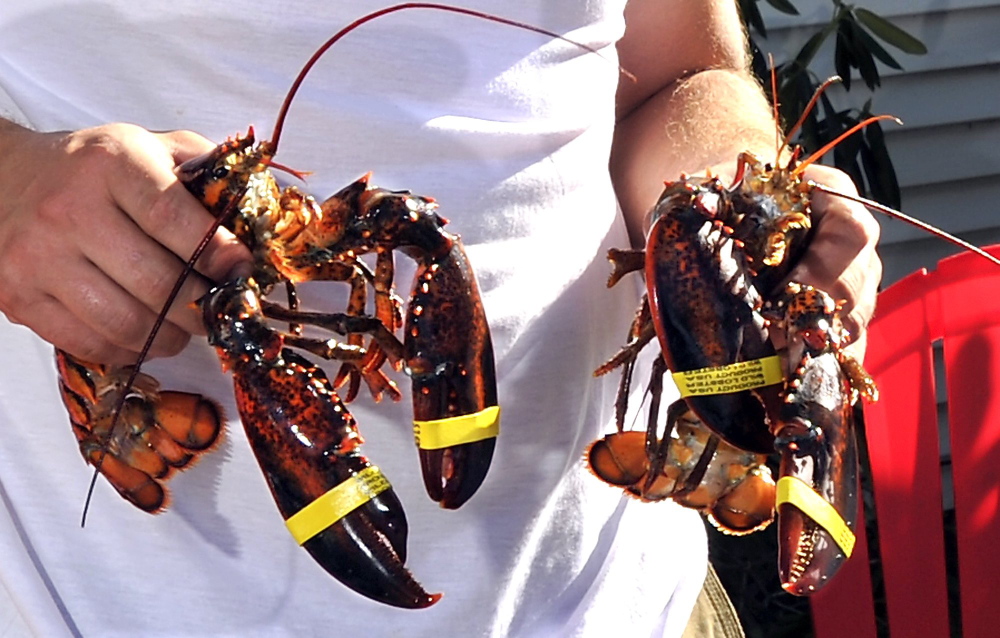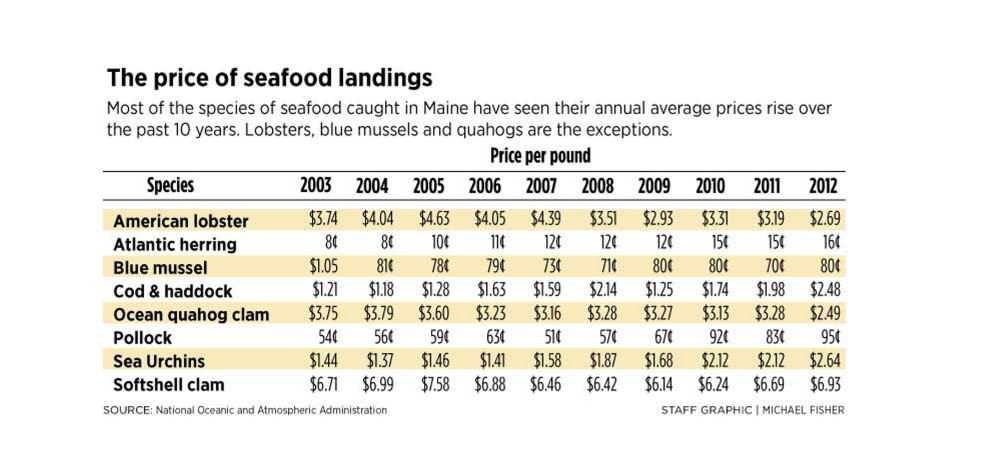Of 10 key species studied by NOAA, only American lobster dropped in price from 2003 through 2012.
It’s a tale well known in Maine: Lobster prices have tanked over the past decade as the harvest has surged.
Among 10 key species that the National Oceanic and Atmospheric Administration examined, only American lobster dropped in price from 2003 through 2012, according to a report released Tuesday.
Commercial fishermen in the United States harvested 9.6 billion pounds of fish and shellfish in 2012, earning $5.1 billion. Sea scallops, shrimp, Pacific salmon and American lobster contributed the most to total revenue.
The greatest increase in landings from 2003 to 2012 was in lobster. The catch more than doubled nationally, to more than 149.5 million pounds. Nationally, the price of lobster fell 27.5 percent, from an average of $3.96 a pound in 2003 to an average of $2.87 a pound in 2012, the report said.
Other species, such as Pacific halibut, Pacific salmon, sea scallops and tuna, roughly doubled in price per pound.
Among other findings in the NOAA report, the value of Maine’s commercial fishery in 2012 increased 8.83 percent over 2011, topping the gain across New England, which was 8.1 percent in the same period.
In 2012, commercial landings in New England totaled 664 million pounds of fish and shellfish, generating $1.2 billion.
Massachusetts had the highest landings revenue in the region, with $618 million in 2012, followed by Maine at $449 million and Rhode Island at $81 million. Massachusetts also had the highest landings total in weight, with 298 million pounds, followed by Maine at 263 million pounds and Rhode Island at 83 million pounds.
Over the past 10 years, prices of seven key species of commercial fish in Maine rose, and in some cases doubled, in value. However, American lobster, ocean quahog clams and blue mussels dropped in price. The 28 percent drop in lobster prices came as Maine landings rose to almost 127 million pounds, from about 55 million pounds a decade earlier.
Market prices for lobster have plunged in Maine as landings have produced a glut. The NOAA report does not include data for 2013, when nearly 126 million pound of lobster, valued at $364.5 million, was harvested in the state, according to Maine’s Department of Marine Resources.
The days of record catches could be nearing their end, according to recent research by the University of Maine. The American Lobster Settlement Index, which surveys young lobsters in 11 locations in the Gulf of Maine, showed that juvenile lobster populations have fallen by more than half since 2007.
A declining juvenile population could lead to smaller catches of adult lobsters, the study suggested. It takes about eight years for lobsters to grow to legal harvesting size.
Jessica Hall can be contacted at 791-6316 or at:
jhall@pressherald.com
Twitter: @JessicaHallPPH
Send questions/comments to the editors.




Comments are no longer available on this story